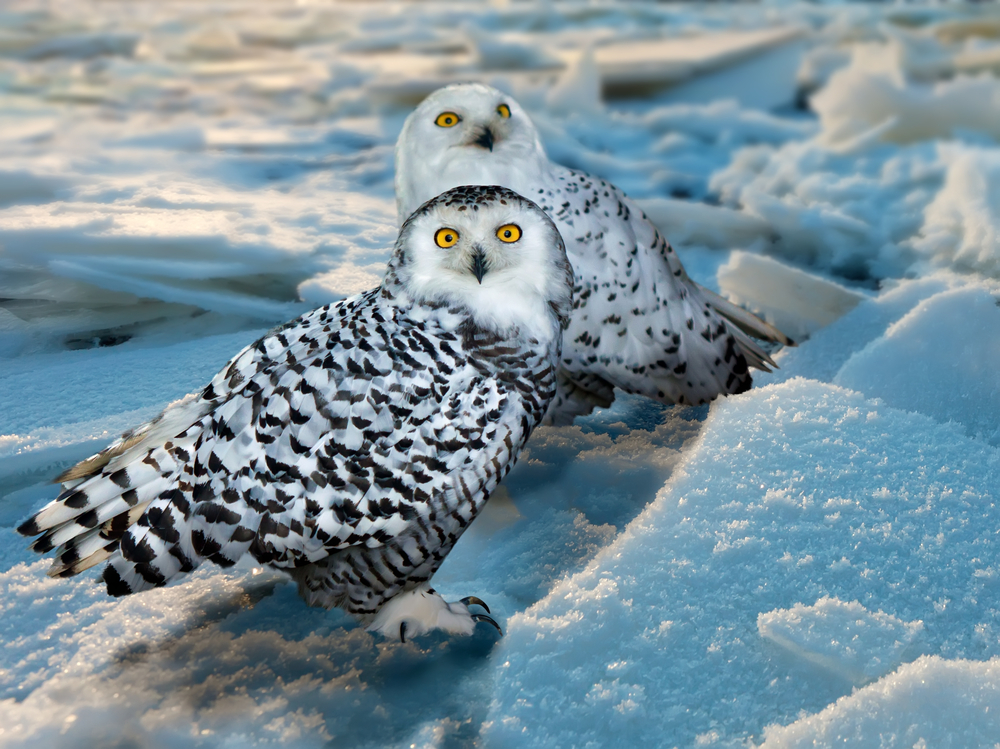Snowy Owls' NYC Visit Reveals Migration Habits

This was another banner winter for snowy owl sightings in New York City. At least seven have been spotted since December, typically in wide-open areas (like by coastlines or even near airport runways) that resemble the birds' tundra homes.
While it may sound strange to see snowy owls in New York City, the sightings aren't all that unusual, experts say. Snowy owls typically migrate as far south as Florida, but rarely are so many seen in a single winter. This year is simply a continuation of last year's great migration, when 22 owls were spotted in New York City alone.
Now, for the second year in a row, researchers are reaping the benefits of this migration, spending long, cold hours in the field, live-trapping the birds in order to later follow their movements via GPS. [Top 10 Most Incredible Animal Journeys]
Already, the data have shed light on the owls' feeding habits and ecology, showing that the animals spend a surprising amount of time on frozen lakes hunting seabirds.
"People used to think that birds migrated because of cold, but migration is usually about food resources," said Tod Winston, communications manager at New York City Audubon.
Snowy owls prefer to eat lemmings. And the owls can't get enough of those small, fuzzy rodents, often eating more than 1,600 lemmings a year, or three to five a day. The lemming population booms and busts on a regular cycle in the Arctic. Every time there's a lemming boom, snowy owls show up in great numbers to breed. But scientists remain unsure just how the owls know where to go.
In the summer of 2013, there was a record number of lemmings in northern Quebec. Snowy owls flocked there like iron filings drawn to a magnet, feasting on the rodents in the summer and breeding in the winter. Thousands of young birds hatched and then flew as far south as Florida and Bermuda a few months later.
Get the world’s most fascinating discoveries delivered straight to your inbox.
Hunting from an icy perch
Owl sightings down south tantalized scientists. "In some respects we know more about their breeding ecology up in the Arctic than we do about the ecology when they're down here in the lower 48 [states] during winter," said Scott Weidensaul, co-founder of Project SNOWstorm, which aims to study owls in their southern habitats.
"By the time we realized the magnitude of it, we said, 'OK, look, none of us are going to live long enough to see this again. This is literally a once-in-a-lifetime opportunity,'" Weidensaul said. So, for two winters now, the Project SNOWstorm researchers have tagged snowy owls with GPS transmitters that send detailed information about the birds' locations every 30 seconds.
These readings showed that some owls flew hundreds of miles per day while others hunted in surprising places. [On Ice: Stunning Images of Canadian Arctic]
The scientists were shocked to see that several owls spend the bulk of winter on the frozen surface of the Great Lakes, far offshore. Because snowy owls feed on lemmings during the summer, most scientists assumed the birds ate rodents year round. Yet, the scientists monitored the owls as the birds headed out after dark, ignoring the big salt marshes full of rodents, and flying straight to the bays.
"We talk to bird watchers in places like Eerie, Pennsylvania, and they say, 'Oh, the snowy owls hang out on the lake shore, but then once it gets cold and the lake freezes and there's nothing for them to eat, then they head inland — they head down into the farm country,'" Weidensaul said. "Well, no, what happens is that once the lake freezes, they head out onto the ice. And some of these birds spend weeks at a time out in the middle of a lake."
But the key is that the lakes are not solid ice. Satellite photos of the region show that the lakes are covered with enormous ice plates that move, shift and break apart. As a result, there are open-water cracks, called polynyas, in the ice where flocks of sea ducks reside during the winter. And those flocks of birds apparently make a tasty meal for snowy owls, who hunt the ducks all winter long.
Climate change?
But can the influx of snowy owls in New York City be explained by climate change? Not quite, experts say.
"This is something that's not tied to climate change," Weidensaul said. "Now, that said, you could argue that snowy owls are one of the species at greatest risk from climate change, because they breed in just absolutely the most northerly land on the planet."
Additionally, snowy owl populations depend heavily on the lemming population. But in order for that population to reach the peak seen in 2013, there has to be a deep, thick and fluffy insulating snow cover, which allows the lemmings to breed right through the winter, Weidensaul said. Already-decreasing snow levels in parts of the Arctic, like in Norway and Greenland, have stopped lemmings from breeding throughout the winter, he added.
"So it's not like the lemmings have disappeared, but their population has become much more stable at a much lower level," Weidensaul said. "They don't boom and bust and boom and bust. And it's those booms that allow the snowy owls to breed so effectively."
However, while conditions in places like Norway have been tough for lemmings (and all animals that feed on them), conditions in the eastern Canadian Arctic may actually be getting better for lemmings. "But it's too early to say for sure," Weidensaul said. "The climate in the Arctic is changing faster and more dramatically than anywhere else on Earth, and the snowy owls, I think, very definitely have a bull's eye on them for what the future's liable to hold."
Follow Shannon Hall on Twitter @ShannonWHall. Follow Live Science @livescience, Facebook & Google+. Original article on Live Science.
